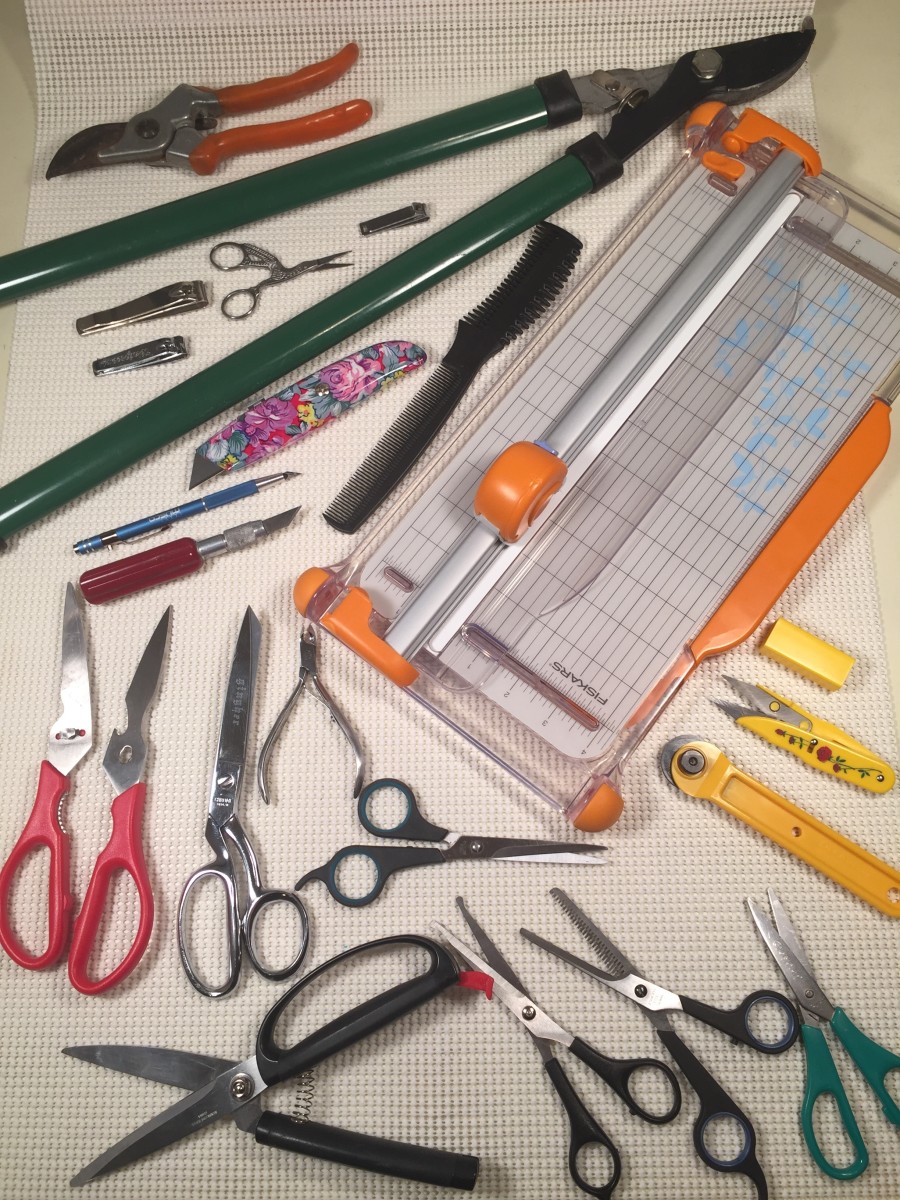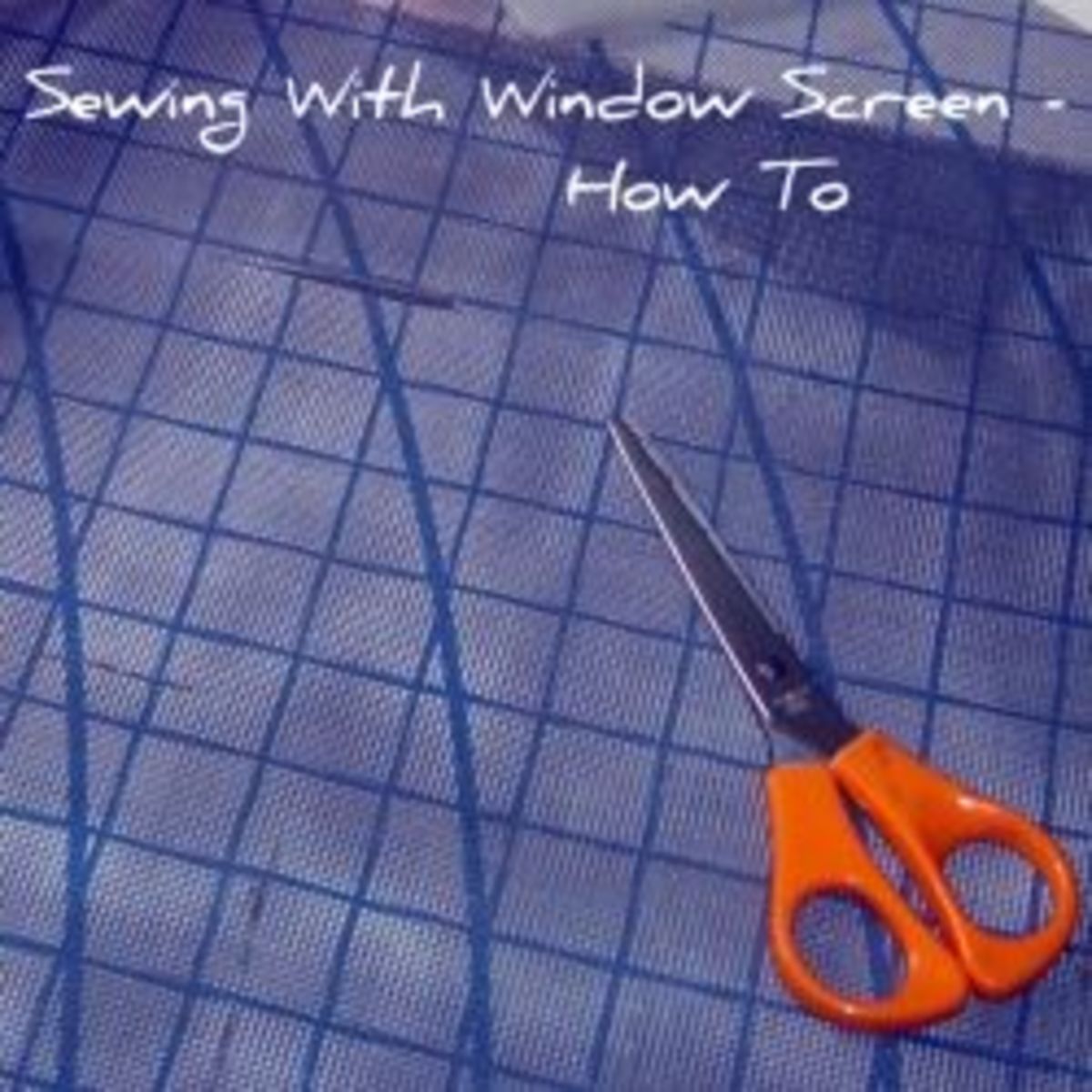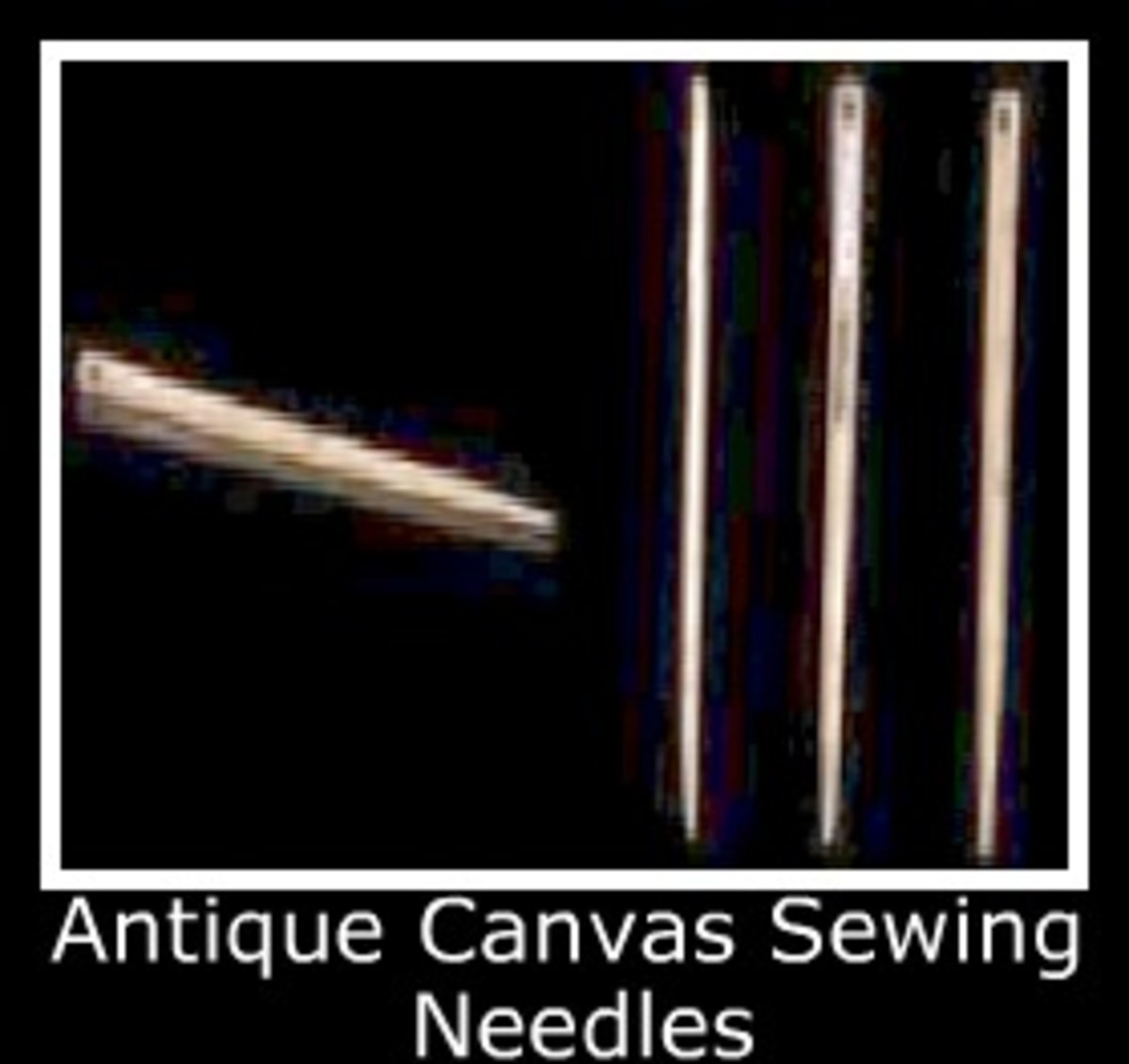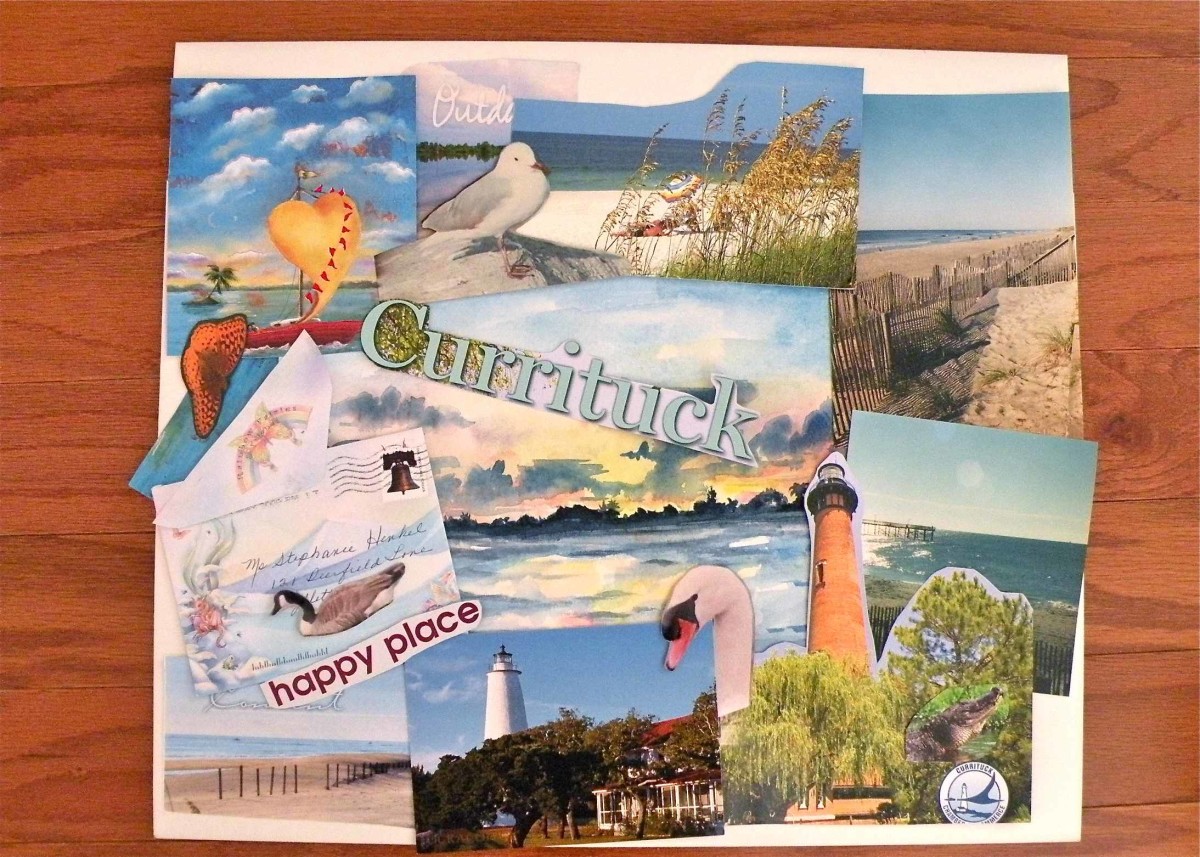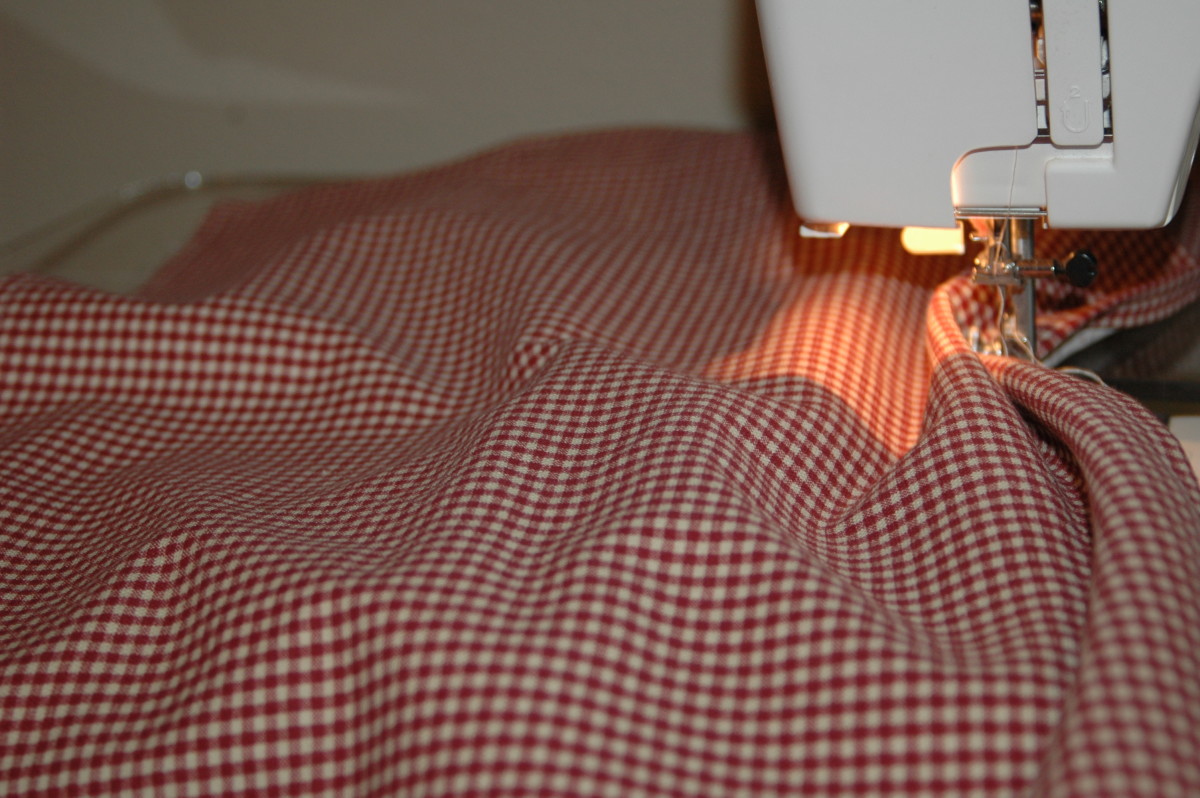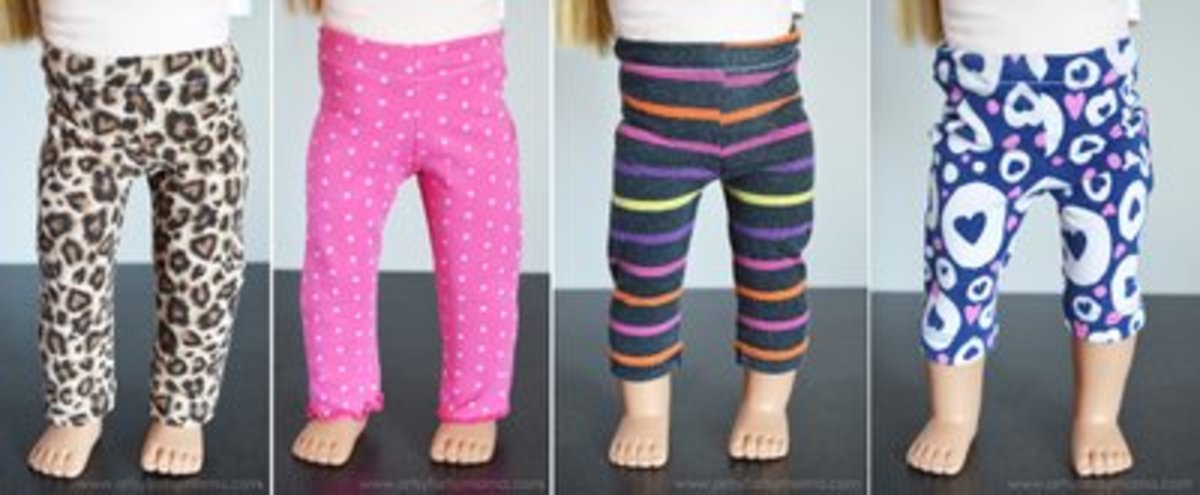Sewing Scissors/Shears - Scissors Basics for Every Sewing Task
Being Sewing Scissor Savvy!
The first 'mini-lesson' when I start a new set of 'Learn how to sew' classes revolves around scissors. I have had students show up with the $2.95 household scissors that are on special at Walmart... you know the ones with the thick yellow plastic handles the ones that might work when snipping off the tip of the milk bag but do very little when trying to cut any type of fabric and are totally useless when wanting to snip off a single thread.
I don't want to sound toffee-nosed or haughty here but in my honest opinion a really good pair of scissors is one of the best investments anyone can make when starting out in any type of handy-work, no matter if it's quilting, embroidery or trying to build a latest styles wardrobe for 3 year old little Stephy.
At lest one good pair of scissors or shears really belongs on the list of most important things to have.

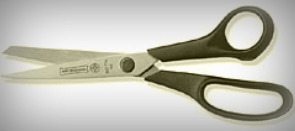
Truth be told one pair of scissors in most cases is not enough to perform all the different sewing tasks such as tailoring, trimming appliques, snipping machine embroidery threads or cutting buttonholes etc. let alone cut all the different types and thicknesses of fibers and specialty fabrics available in our wonderful fabric-world of today.
Over my thirty-five+ years as a tailor, dressmaker, embroiderer and quilter I have used many different scissors. It seems I've tried most, ones in the price ranges that ran from just under $20.00 to more than $200.00. Obviously the type of scissors or shears best suited are really influenced by the type of sewing you do or specialize in.
Let me explain. If you work with fine sheer, silk and organza the scissors you need are the kind that work best with the these fine soft fabrics. If you mainly reupholster furniture then the scissors have to be tough enough to handle multiple layers of dense and hard fabric. On that note a sewer who does a little of each will have to find a middle ground as having a pair for every application might just not be feasible.

There are many, many styles, types and manufacturers of scissors and shears on the market.
If you live in a large city, chances are that in one of the malls, there is a store that strictly handles sharpies... items like scissors, shears, trimmers and knives etc.
There you can ask the sales clerk to show you all the different styles, as they will carry all major name brands (good name brands that is). This will give you a chance to get a feel for the scissors or shears, better said, it lets you find out what type of handles, size etc. fit your hand best. Obviously this is the ultimate way of scissor shopping but like I said these types of stores are mainly in large city centers only. Also be prepared that none of the price tags there will be in the 20 dollar line as they only carry the best know name brands.
A good fabric store will also carry a selection, definitely not as wide as the specialty stores but unless you're a professional sewer who needs specific cutting tools then you're sure to find something that will suit you there.
If you know what kind of scissors you really like on-line can also be a good way to find great buys on scissors.
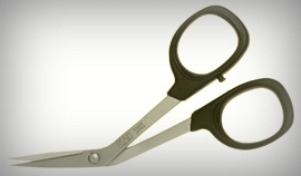
Before we get into the particulars of "what to look for in a scissor" Let's cover some of the basics first. Obviously all cutting tools that have two crossing blades held together at a pivoting point are called scissors. However there is a difference in structure between scissors and shears.
Shears have one large finger ring or hole and a smaller one for the thumb and are usually longer than 7in/17.5cm in length. Most of these are offset or bent for cutting on a flat surface. This bent structure allows room for the hand to move up and down while the fabric can remain flat on the table without it being lifted as it's being cut. Most importantly this allows for a better cutting accuracy.
Scissors/shears should open and close with a smooth and easy action. (should feel like when you're cutting soft butter) The two blades as they're closing need to fit together without more than a fraction of a hair space between them and when the blades are closed the tips or points should meet exactly.
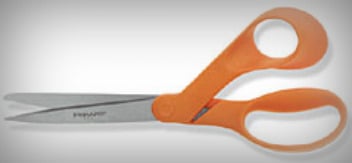

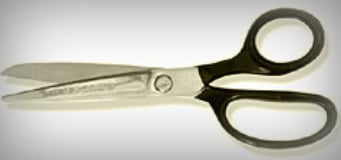

What to look for when buying a pair of sewing scissors!
These are some of the things I look for when I'm shopping for new scissors/shears: (naturally these points all depend on what those scissors will be used for)
~How well do the scissors fit into the hand? After all, these scissors/shears are an extension of the working hand. The scissors need to sit comfortably in the hand. If they don't fit right the hand will tire after a few short minutes of cutting.
~Are they too heavy-- if you pick them up and the first thing that comes to your mind is 'wow, they're really heavy' then just imagine working with them for a full day. (not a good option)
~Are they too long-- Naturally a longer cut with one motion is preferable, mainly for accuracy cutting but if you don't feel you have control over them or you feel you're going to stab someone across the room with your shears then the 15"/37.5cm long scissors will not do you any good. After all you're not just cutting on the straight, there are curves and tight corner to consider too.You need total control over the cutting edge and what you're cutting, so if you have that with your 8"/20cm trimmers then you're getting the job done faster and better than if you're scarred of your scissors and you keep hesitating.
~ I have short stubby fingers, now with arthritic knob knuckles, so the handle rings need to be large enough so that my fingers or thumb don't get stuck. The scissors/shears need to slide off and out of my hand easily. Nothing is more frustrating than when you have to waste time to puzzle twist and turn your thumb out of the scissors ring.(This has happened to me on many occasions when I grab the wrong scissors)
~I prefer really pointy fine tipped scissors to the solid blunt and thick styles, especially when cutting fine fabrics such as sheers, organza, chiffon etc. These finer structured scissors/shears do not have the long life as the more solid built ones as they can only get sharpened so many time but I consider that well worth it considering of the better control I have.

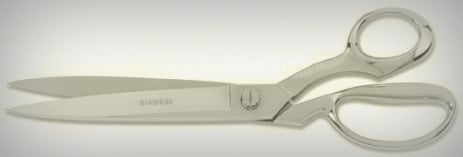
I have accumulated many scissors over the years, some I can do almost
anything with, others were not my favorite so they're almost in brand
new condition. Some felt perfect in every which way except that they
just didn't have a thin and fine enough tip but once those were machined
down they became instant best loved ones.(only ask trusted sharpening companies to do this as once messed up scissors will only be good for paper cutting jobs after)
I have micro-serrated shears that are perfect and give more control when cutting silk-like fabrics. Their fine serrated edge grasp silks and fine knits for a smoother accurate cut.
I have a pair of pelican-beak pointed ones that slip between the seam allowance and the item being sewn and prevents the cutting of the bottom layer... perfect to use when prepping for those french seams.
A friend gave me her vintage pair of shears, that have been around for over 60 years, they're WISS name brand 15"/37.5cm long upholstery fabric shears that can cut jute-backed carpet. They could probably cut through nails. I have only had to have these ones sharpened 3 times in the 30+ years that I have owned them.


My all time favorite 12"/30cm shears
The KAI 7000 shears offer all I ever look for in a pair... the weight, the thin blades, the fine point and they're absolutely the best I can afford to use on a constant basis. They do come with a bit of a higher then average price tag (around Can$130.00) but they're really worth it, to the very last little dime.
These stainless steel Japanese made shears feel lightweight but are made for heavy duty cutting. They have larger finger rings or handles with soft cushion-y inserts that fit my thumb and 4 fingers nice and loosely. I can cut with them for hours without my arthritic hands getting too tired and sore. They're also held together by a double-locking nut.
*****One word of caution though--- make sure you take them to a reputable sharpening company when they need to be sharpened (Mine are 4 years old now and still as sharp as the first day when I bought them) because I was told that the cutting edge of the blades of Japanese made shears are machined at a different degree than the rest of the world name brands. *****

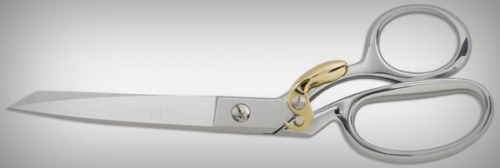

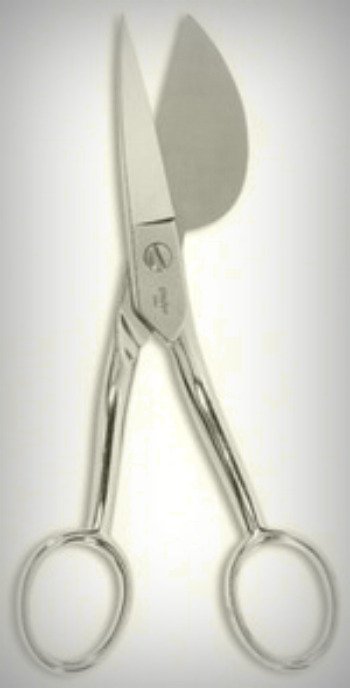
How to care for your sewing scissors/shears:
- Do not cut anything else other than fabric or thread with your favorite sewing scissors/shears. Especially paper dulls blades very fast ==> there is nothing more frustrating and tiring to your hand than using dull scissors. Non-sharp scissors can damage fabric. Your cutting accuracy will also be affected if the scissors/shears are trying to chew through the fabric rather than cut through it.
- Do not leave any of your sewing scissors/shears anywhere where the kids/husband can find them. I learned this the hard way. Quite a few years ago when the first micro-serrated shears came on the market (better said became more affordable) I forgot my brand new pair on the kitchen table. My children, were used to me taking my 'work' scissors with me at all times. It never occurred to them that, that shiny new pair of shears left behind was not for them to use. They quite happily used them in their large 'cardboard box car' construction. I can report that their 'cars' really had fabulously smooth cut edges, however those shears were never good enough after that to use on soft silk and sheer fabric any more. I caught my now "X-husband" using another of my good scissors to open a can of paint (You're not surprised that he became the "X" are you?)
- Be careful not drop your scissors because they will never be the same again. This goes for all scissors, however the fine pointed ones seem to be more prone to bend ever so slightly. Not only can these falling weapons be detrimental to the toes but they can also do damage to linoleum floors or crack ceramic tiles.
- Before packing your sharpies away and after every major cutting job open up your scissors/shears all the way, as far as they open, and place a small drop of oil (sewing machine oil will do fine) in between the blades, wiping the excess off with a soft cloth. (t-shirting scraps work fabulously) Then give the blades a wipe down with the slightly oily cloth. This will clean out the dust fibers at the pivot point and help to keep the moisture from the air of causing the metal to rust. This is especially important if you live in a hot and humid climate or by the sea.
- Do not throw your good scissors/shears into a junk drawer or sewing box, where all the clutter can scratch nick or damage the blades. Either hang them up in your sewing room or if they didn't come in a box or with a blade protector you can always make a fitted cover out of some scrap fabric. Or use pencil cases, you know the ones that zip up and come with the three grommets that can be snapped into a three ring binder. Especially if you travel with your equipment too this can make it easier to protect your investment... These pencil cases are really inexpensive usually no more than a buck at a dollar store. Probably even cheaper when shopping before school start.
- Avoid at any cost cutting through pins with your precision scissors/shears. Unless they're wire cutters these pins will leave damage burrs or nicks on the blades which then will snag your fine fabric every time.

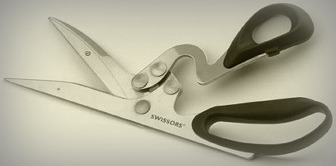

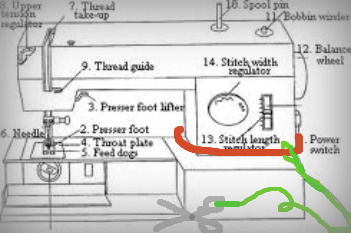
TIP:
I can not remember how many scissors and snips I've ruined over the years when the project I was working on pushed them off the sewing machine table. This is when I came up with 'leashing' them to my sewing machine with a piece of elastic long enough not to restrict my using them which ever way I'm facing but short enough that if they go over the edge even bouncing will not reach the floor. Every work station in my sewing room has one of these imprisoned pair of scissors/shears snips or trimmers tied to it. Which ever works best for whatever work task.

Check out these babies! I'm looking for these!
My sewing lesson hubs!
- Sew Those Seams---Easy How to Sew Tutorials!
I'm proud to admit that I'm a stitch-a-holic. I was bitten by the highly contagious sewing bug many, many years ago. There is no cure, no remedy and temporary relief can only be found at the nearest fabric... - Sewing Kit--- Have to have-s!
To prepare a good sewing kit we have to jump a bit ahead of the game. The procedure of sewing includes a multiple of tasks that all need their own equipment. For sizing we need measuring tools. ... - Fabric- getting to know fabric- part 1- Light to Med...
Were almost through the basic theory that a new sewer needs to know. Just a couple more hubs then well be able to dive into the fun projects and procedures. This one is probably going to be the... - Thread: a guide to sewing thread! for hand and machi...
Have you ever stood in front of the six thread racks at your local Fabricland and wondered what the difference was? Now-a-day there is more to it then just trying to match the thread... - What to look for when buying that First Sewing Machi...
For you sewing-newbies here are some of the details on a sewing machine that you need to know about right away. As we progress well learn more of the individual functions and their uses. For you... - How to fit pants and jeans
So are you frustrated with ill-fitting pants yet? Before you buy another pair of pants or jeans that sag in the butt, pucker at the pockets and/or fetter around the waist read this guide that will give... - Tips For How To Shorten Jeans! Easy step by step met...
The problem most have with getting jeans shortened is that they don't look the same anymore once the original hem has been cut. Here I'll give you the basic and easy way. The problem most have with getting... - How To Make An Eco-Friendly Shopping Bag
You will need one meter or yard of medium weight of cotton denim (not stretch-denim) Poplin, Twill, a polished cotton or a light weight upholstery fabric. Using a 45 - Tent Repair: How to fix a tear/rip in a tent!
You're planning to go camping next weekend and you just remembered that on last years camping trip you noticed a small tear in your tent. If not repaired that small tear can become a large problem... - Save Money: Reupholster Your Furniture Yourself
One of the key words here would be reupholster furniture INEXPENSIVELY therefore save money.... If you have antique furniture that's worth mega bucks, give it the attention it deserves and let a...

Great Sewing hubs by other hubbers who share a whole lot of awesome info!
- Featherweight Sewing Machines
The Singer - Treadle Sewing Machines:Sew Simple
Knowing how to use a treadle sewing machine is on it's way to becoming a lost art. Many people think that the treadle, or manually powered, sewing machine is a thing of the past but that is not true. - How to Make a Cloak or Cape
Whether for a costume or just keeping warm, a cape or cloak can be great. Learn how to sew your own, or try the no-sew cape method! - How To Write A Business Plan For A Home Based Sewing...
Once you have made up your mind that you are going to start a home based sewing business, you may be at a lost as to where to start first. It is best to start with writing a business plan. Write a business... - How To Start A Home Sewing Business
Having a home sewing business can be an exciting, fun and profitable adventure for the person who loves to sew. What a way to make a living by doing what you love right from your own home. Operating a home... - Learn How to Sew with Singer Sewing Machines
Could your child learn how to sew with Singer Sewing Machines just like Cecilia Cassini? She is the child prodigy with a natural flair for fashion, who learned to cut fabrics not long after she cut her first...



